Cracking the Code with Troy Grady: Albert Lee's Country Curve
Dive deep into Albert Lee's incredibly fluid country picking with this lesson.
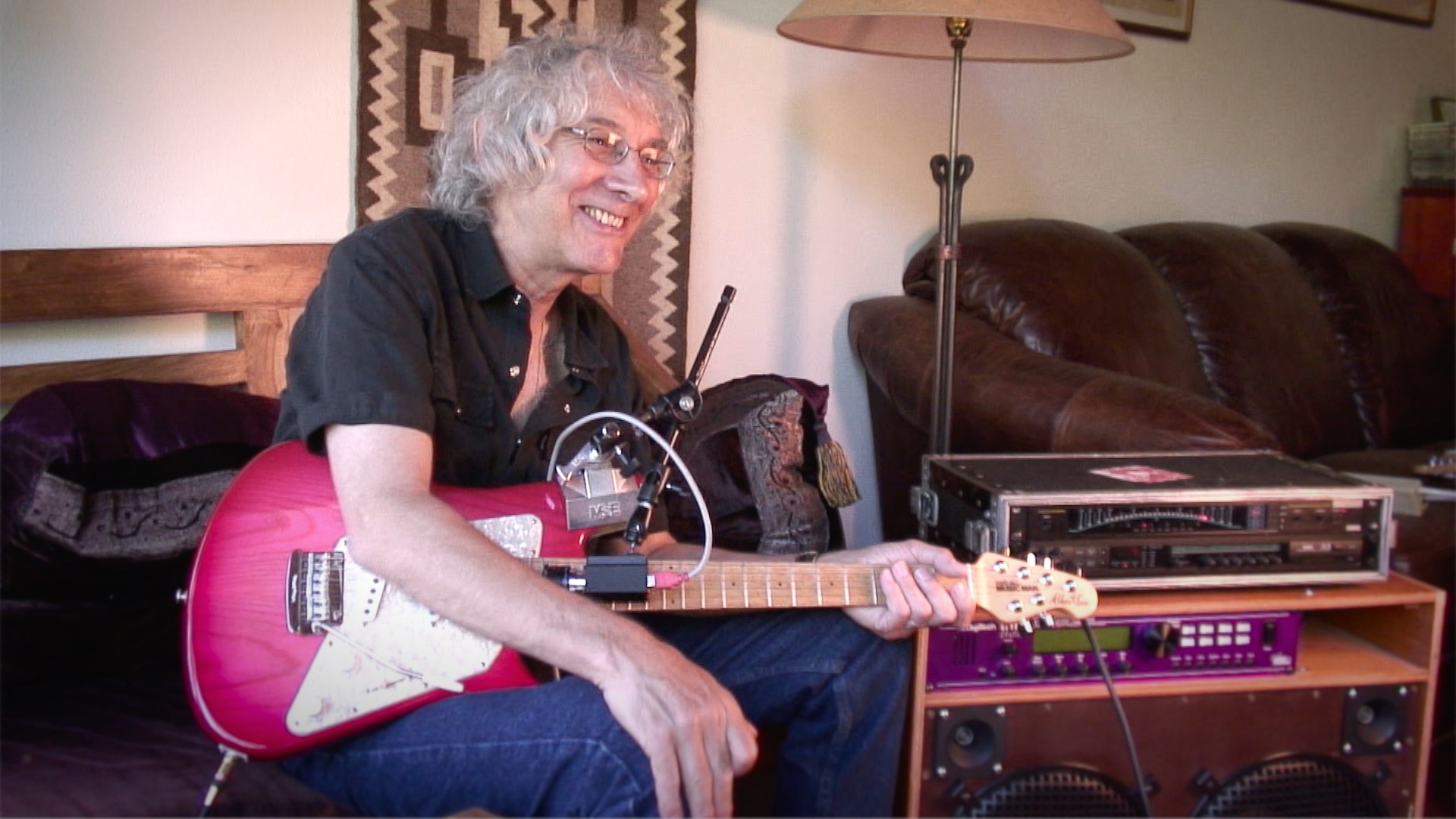
When I first heard Albert Lee's "Fun Ranch Frolic" when I was in high school, I was floored by its precision and unstoppable groove.
It was a decade of plectrum prowess, and there was no shortage of muscular technique to go around.
Yngwie Malmsteen was, of course, famous for his ability to play full-picked lines across the strings with seemingly impossible accuracy. And even Eddie Van Halen could sting unexpectedly with blasts of right-hand wizardry.
But Albert did all of that with a clean tone. And without so much as a Marshall stack or a 9-volt battery in sight, Albert's relentlessly rhythmic riffing was all the more impressive:
Down Home Slant
The ability to play lines that weave effortlessly across the strings was pure sorcery to me as a teenager. With the benefit of hindsight, and a little knowledge of the picking mechanics that we've uncovered in the journey Cracking the Code, the source of at least part of Albert's mystical power is readily apparent:
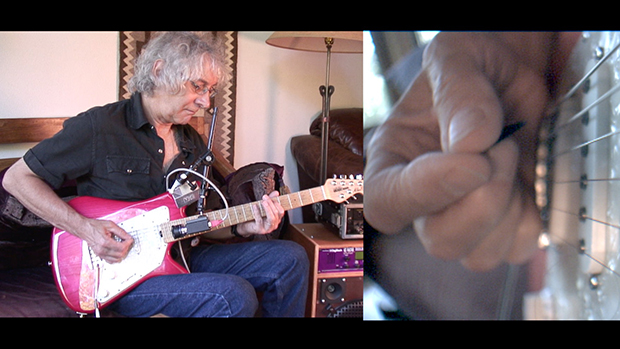
Of course, it's downward pickslanting. We've written about this often in this space before, for example in our investigation of Eric Johnson's picking technique. A brief detour through that articles is a good quick refresher on how the technique works. But to summarize, pickslanting isn't so much a way to move the pick. Rather, it's a way to take whatever picking motion you already have, and allow it to move cleanly across the strings without slowing down for the string changes.
All the latest guitar news, interviews, lessons, reviews, deals and more, direct to your inbox!
In the case of the downward style of pickslanting, its string-switching power is activated specifically when you play an upstroke. That's when the pick rises up out of the strings, and lets you move to a new string with perfect efficiency:
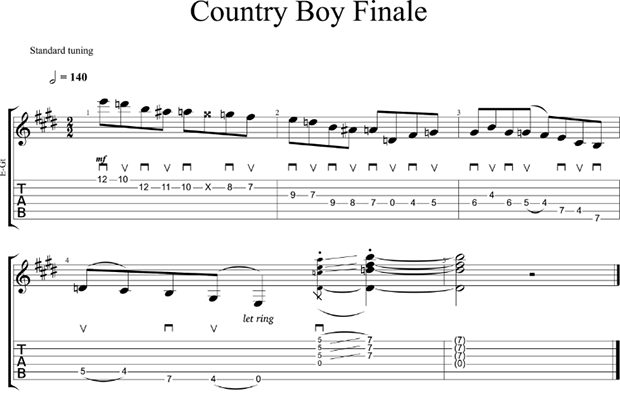
This blast of snapping country funk is classic Albert Lee. It's virtuosic, but never gratuitous, and moves forward under its own pulsing sense of time. And as we can clearly in the slow-motion segment, most of the string changes in the lick occur on strings were the final note is an upstroke. This is when the pick escapes the strings, so there's no danger of hitting any of the others. And this is precisely what we'd expect of a downward pickslanter.
The Country Curve
But that's only half the story. Because when we look at other examples of Lee's playing, we see some unexpected things:
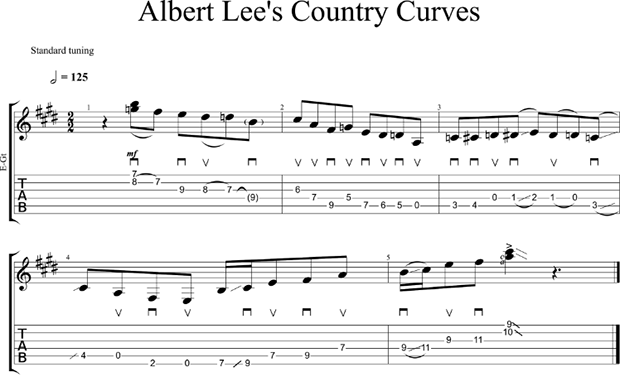
Downstrokes! In this excerpt of Lee's improvisational power, the upstrokes still lift out of the strings. But when we look at the slow motion segment, we can also see that downstrokes often do too, just in the opposite direction.
And this is fascinating. Switching strings after a downstroke is strictly verboten for downward pickslanters, because it usually sends the pick crashing into the next higher string. But Lee is no ordinary downward pickslanter. Somehow, he's figured out a way to get the pick to curve gracefully out of the strings on downstrokes.
This curvature allows Lee to switch strings with high efficiency regardless of which pickstroke he uses to finish a string. This is quite different from the picking motion of players like Eric Johnson, which moves straight into and out of the strings, and where high-speed string changes usually only occur after upstrokes.
In fact, in our last column we've already looked at another highly unique rock player with a distinctly curved picking motion:
Of course, we're talking about the incomparable Steve Morse. Steve's ability to use alternate picking to play arpeggios is legendary in rock and fusion. And the curved movement of his pickstrokes it what allows him to do this.
Solving the Curve
But how do you actually perform the movement? One guess would be forearm rotation. It's a common approach for fast picking, used perhaps most famously by gypsy jazz players. And it would seem like a logical choice because it does indeed cause the pick to move in a curve in exactly the plane we'd require. Except for the fact that it's simply not happening:
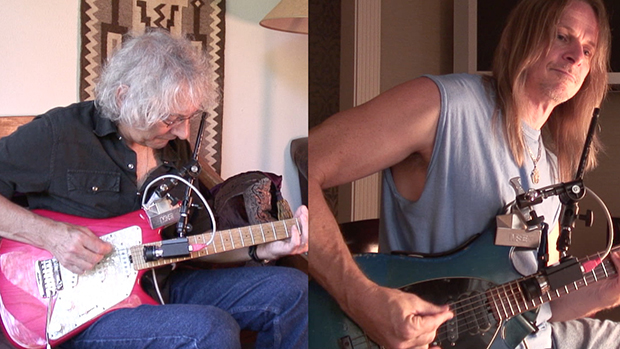
The perplexing observation here, when we examine the slow motion footage again, is that there is no overt forearm twisting visible at in either Morse or Lee's playing. And to paraphrase a famous detective, when you've eliminated the impossible, the only remaining possibility, no matter how counterintuitive, must be the answer:
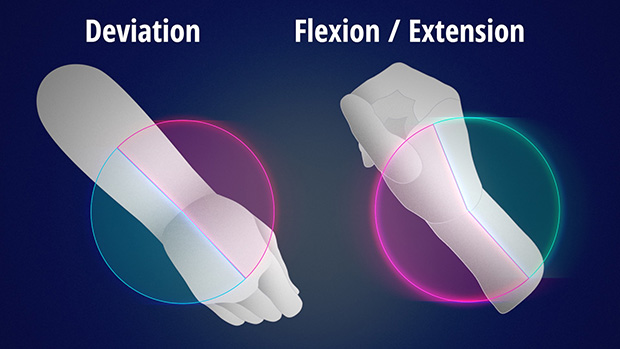
And that possibility is wrist movement. The wrist is an amazingly flexible joint system capable of 360-degree motion without no additional arm or finger movement required. And what's even cooler is that it does this by combining only two basic movements, deviation and flexion/extension.
The side-to-side, "clock face" movement of the wrist is deviation. This is an extremely common approach for alternate picking movement, and we see it in the playing of picking legends like Al Di Meola:
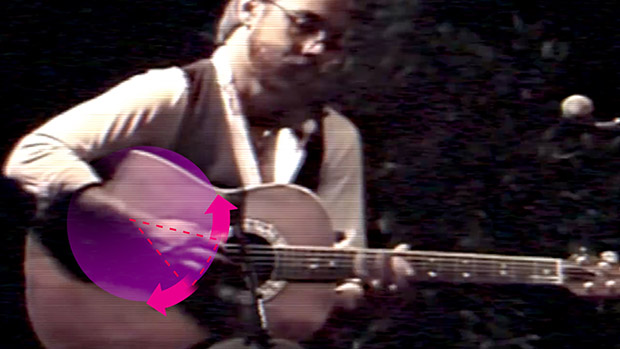
Operating a right angle to this is wrist flexion and extension. This the bending movement that you use when knocking on a door. We don't normally associate this kind of movement with picking technique, but it turns out to be critical to creating Lee's graceful "country curve":
And the secret, once again, is pickslanting. By simply tilting the axis of the forearm with respect to the guitar's body, and entering into downward pickslanting, the 90-degree separation between deviation and flexion/extension creates a Batman and Robin-style partnership. Deviation now moves the pick into and out of the strings, just as we've seen in Johnson and Di Meola's technique. But flexion/extension now also moves the pick into and out of the strings, just in the opposite direction.
It's basically two picking movements in one. Above the string, we use a deviation movement, and below the string we use flexion and extension. Blending between the two creates the perfect curvature that we see in both Lee and Morse's techniques, without any forearm rotation at all. Here's the most basic version of the formula:
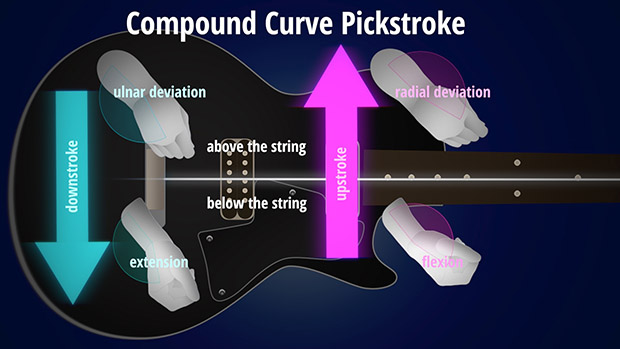
On the surface, it seems totally counter-intuitive to try and make two separate movements for each pickstroke. But neither Morse nor Lee lack for speed. The reason is that the upstroke and the downstroke each use completely different chains of movement, with no overlap between the muscle groups. This is a picking system that truly alternates, and that's why it can be done fast.
The upside of this compound movement is large. It lets us move across the strings no matter what kind of pickstroke we're using. And it's the reason that players like Lee and Morse seem so unbound by the traditional challenges that most alternate pickers battle, even when they're picking only one note on a string.
That Lee and Morse were able to devise this ingenious mechanical solution by intuition and feel, without anyone specifically showing them how to do it, and without the vast instructional resources of modern camera technology and the internet, is nothing short of amazing.
For more on Lee's incredibly fluid country picking, watch the complete Albert Lee interview in Masters in Mechanics.
Troy Grady is the creator of Cracking the Code, a documentary series with a unique analytical approach to understanding guitar technique. Melding archival footage, in-depth interviews, painstakingly crafted animation and custom soundtrack, it’s a pop-science investigation of an age-old mystery: Why are some players seemingly super-powered?
Troy Grady is the creator of Cracking the Code, a documentary series with a unique analytical approach to understanding guitar technique. Melding archival footage, in-depth interviews, painstakingly crafted animation and custom soundtrack, it’s a pop-science investigation of an age-old mystery: Why are some players seemingly super-powered?
